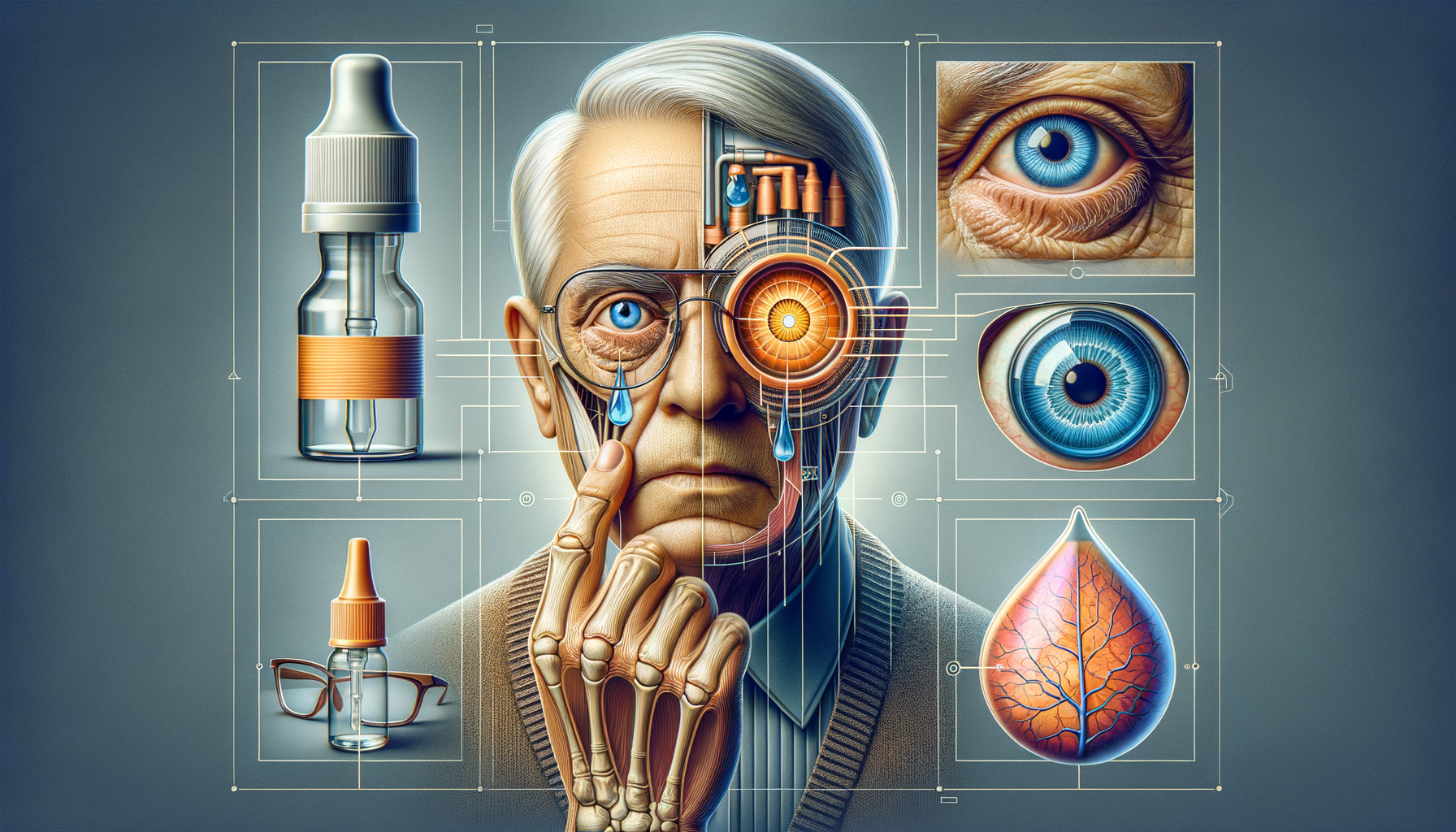What To Know About Managing Dry Eyes In Older Adults
Struggling with uncomfortable, dry eyes as you or a loved one ages? Managing dry eyes in older adults is crucial for maintaining comfort and eye health. In this post, we’ll explore key tips and treatments to help soothe and protect aging eyes.

Understanding the Causes of Dry Eyes in Seniors
As we age, our bodies undergo numerous changes, and the eyes are no exception. Dry eye syndrome is a common condition among seniors, often caused by a decrease in tear production or an increase in tear evaporation. This condition can lead to discomfort, blurred vision, and even an increased risk of eye infections.
Several factors contribute to the prevalence of dry eyes in older adults. Firstly, the natural aging process leads to a reduction in the production of tears. The lacrimal glands, responsible for tear production, may not function as efficiently, leading to insufficient lubrication of the eyes. Additionally, hormonal changes, particularly in post-menopausal women, can exacerbate dry eye symptoms.
Environmental factors also play a significant role. Seniors who spend a lot of time in air-conditioned or heated environments may experience increased tear evaporation. Similarly, prolonged exposure to wind or smoke can further dry out the eyes. Certain medications, such as antihistamines, blood pressure drugs, and antidepressants, can also reduce tear production as a side effect.
Understanding these causes is crucial for effective management and treatment. Recognizing the symptoms early and identifying potential triggers can help in devising a personalized approach to managing dry eyes, ensuring better comfort and eye health for seniors.
Effective Treatment Options for Senior Dry Eye Relief
Treating dry eyes in seniors involves a combination of approaches aimed at increasing tear production, reducing tear evaporation, and addressing underlying causes. Over-the-counter artificial tears are often the first line of defense, providing temporary relief by lubricating the eyes. However, for more persistent cases, prescription eye drops that reduce inflammation or stimulate tear production may be necessary.
In some cases, doctors may recommend punctal plugs, tiny devices inserted into the tear ducts to prevent tears from draining away too quickly. This can help maintain a more consistent tear film on the surface of the eyes. For those with severe inflammation, topical corticosteroids or cyclosporine drops may be prescribed to reduce swelling and improve tear production.
Additionally, lifestyle changes can complement medical treatments. Using a humidifier in the home can add moisture to the air, reducing tear evaporation. Wearing wraparound sunglasses can protect against wind and sun, while taking regular breaks from screens can minimize eye strain.
It’s essential for seniors to work closely with their healthcare providers to develop a treatment plan tailored to their specific needs. Regular follow-ups can help monitor the condition and adjust treatments as necessary, ensuring optimal eye health and comfort.
Lifestyle Adjustments for Managing Dry Eye Symptoms in Aging Adults
Adopting certain lifestyle adjustments can significantly alleviate the symptoms of dry eyes in seniors. One of the most effective strategies is to maintain a balanced diet rich in omega-3 fatty acids, found in fish like salmon and mackerel, as well as flaxseeds and walnuts. These nutrients are known to support healthy tear production and reduce inflammation.
Staying hydrated is also crucial. Seniors should aim to drink plenty of water throughout the day to maintain adequate moisture levels in the body, including the eyes. Reducing caffeine and alcohol intake can also help, as these substances can contribute to dehydration.
Environmental modifications can make a big difference too. Using a humidifier, especially during the winter months, can counteract the drying effects of indoor heating. Encouraging regular breaks from digital screens can help reduce eye strain and fatigue, which are common contributors to dry eyes.
Practicing good eyelid hygiene is another important aspect. Gently cleaning the eyelids with a warm, damp cloth can help remove debris and oils that may block tear glands. This simple routine can improve tear quality and reduce irritation.
By making these lifestyle changes, seniors can significantly reduce the discomfort associated with dry eyes, enhancing their quality of life and maintaining their eye health as they age.